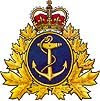
Every now and then we get either phone calls or e-mails from people who want to know about lighthouses. People want to find out about working in them, or they want historical information on them and/or the people who tended them.
Lighthouses, real functioning ones, are considered Aids to Navigation. They are the responsibility of the Canadian Coast Guard, until such a time as they are decommissioned. The Aids to Navigation Program carries out the following activities:
- designs, installs, maintains, monitors and reviews marine aids to navigation (e.g. fixed aids, lighthouses, beacons, buoys and radionavigation systems, such as the Loran-C and the Differential Global Positioning System)
- provides expertise on the design and operation of private aids to navigation
- provides navigation safety information through the Notice to Mariners (NOTMAR), which gives on-line access to a list of lights, buoys and fog signals as well as their position and coordinates.
http://www.notmar.gc.ca/index.html
They also have a specific emergency telephone number for every region within Canada, for reporting the outage, failure or off-position of any aids to navigation.
http://www.ccg-gcc.gc.ca/eng/Ccg/atn_Home
"My great, great grandfather used to work at such-and-such a lighthouse. Do you have any records of this?"
- Absolutely not, sorry. Once any federal employee has ceased working in their employment for a year or more, all their employment records are shipped off to the national Library and Archives Canada. The same applies for any Canadians who have served in the military. Their military records are located in the same spot.
http://www.collectionscanada.gc.ca/index-e.html
"There's a lighthouse that has been abandoned for several years now. It's falling into disrepair and looks a very sorry sight. I think the Coast Guard should do something to maintain these culturally important icons of Canada's sea-going and coastal heritage!"
- Noble sentiments, to be sure. However, once a lighthouse has been decommissioned and is no longer active, it no longer belongs to, nor is the responsibility of the Canadian Coast Guard. End of story! Lighthouses, as well as the land they occupy, are disposed of in the very same manner as any other federal surplus items. Through Public Works and Government Services Canada (PWGSC) - Crown Assets. It may be turned over to the province, sometimes the municipality or private developers. Across Canada, there are a plethora of private organizations, which fancy themselves as Lighthouse Societies. These are manned by people who are drawn to the romance of the lighthouse and it's close ties with the sea.
Some of these groups are bona fide lighthouse preservation societies, who make it their mission to restore and preserve our lighthouses, in cooperation with municipal, provincial and federal authorities. Besides being concerned with the physical preservation of these structures, they can also provide a wealth of historical information on the lighthouse itself and the people who kept the lights burning. The following links will provide examples of such societies across Canada:
http://www.gov.pe.ca/infopei/index.php3?number=66328&lang=E
http://fortress.uccb.ns.ca/louisbourglighthousesociety/
http://www.hlps.ca/
Many people will contact us looking for such historical information. Each province and territory keeps tabs on their own historical footnotes. By contacting your Provincial Enquiry Centre, they will be able to direct you to where you might find such information within your own province. Then again, by using any search engine on the internet nowadays, you can locate you own local lighthouse preservation societies.
Over the last few decades, lighthouses have become more and more automated. There are few remaining lighthouses which are actually manned by people. There is a waiting list of people who wish to take up this type of career and it goes without saying that it is not a career for just anyone. Lighthouse keepers are hired through Fisheries and Oceans Canada, just as those who want to serve onboard DFO/Coast Guard vessels.
Lighthouses have always been our link between land and sea. They evoke strong emotions in many people and I for one share this belief that our maritime history should be maintained and cared for, to the best of our abilities. I also know however, that this is not the responsibility of the federal government. Once again however, it's a matter of knowing whom to address our concerns to and realizing that the federal government is not always responsible for everything.
I still find it amazing that people who can sit down and use their computers to write us e-mails, have no ability to use these very same computers to find the information they are looking for. Many times they begin their search directly on the various websites for Fisheries and Oceans Canada / Canadian Coast Guard, rather than use any of the many search engines available. For all of you out there, here is a very good hint:
"If you can't find the information you are looking for on a DFO or Coast Guard website, it's probably because it has nothing to do with either one of these federal entities!!"
Lighthouses, real functioning ones, are considered Aids to Navigation. They are the responsibility of the Canadian Coast Guard, until such a time as they are decommissioned. The Aids to Navigation Program carries out the following activities:
- designs, installs, maintains, monitors and reviews marine aids to navigation (e.g. fixed aids, lighthouses, beacons, buoys and radionavigation systems, such as the Loran-C and the Differential Global Positioning System)
- provides expertise on the design and operation of private aids to navigation
- provides navigation safety information through the Notice to Mariners (NOTMAR), which gives on-line access to a list of lights, buoys and fog signals as well as their position and coordinates.
http://www.notmar.gc.ca/index.html
They also have a specific emergency telephone number for every region within Canada, for reporting the outage, failure or off-position of any aids to navigation.
http://www.ccg-gcc.gc.ca/eng/Ccg/atn_Home
"My great, great grandfather used to work at such-and-such a lighthouse. Do you have any records of this?"
- Absolutely not, sorry. Once any federal employee has ceased working in their employment for a year or more, all their employment records are shipped off to the national Library and Archives Canada. The same applies for any Canadians who have served in the military. Their military records are located in the same spot.
http://www.collectionscanada.gc.ca/index-e.html
"There's a lighthouse that has been abandoned for several years now. It's falling into disrepair and looks a very sorry sight. I think the Coast Guard should do something to maintain these culturally important icons of Canada's sea-going and coastal heritage!"
- Noble sentiments, to be sure. However, once a lighthouse has been decommissioned and is no longer active, it no longer belongs to, nor is the responsibility of the Canadian Coast Guard. End of story! Lighthouses, as well as the land they occupy, are disposed of in the very same manner as any other federal surplus items. Through Public Works and Government Services Canada (PWGSC) - Crown Assets. It may be turned over to the province, sometimes the municipality or private developers. Across Canada, there are a plethora of private organizations, which fancy themselves as Lighthouse Societies. These are manned by people who are drawn to the romance of the lighthouse and it's close ties with the sea.
Some of these groups are bona fide lighthouse preservation societies, who make it their mission to restore and preserve our lighthouses, in cooperation with municipal, provincial and federal authorities. Besides being concerned with the physical preservation of these structures, they can also provide a wealth of historical information on the lighthouse itself and the people who kept the lights burning. The following links will provide examples of such societies across Canada:
http://www.gov.pe.ca/infopei/index.php3?number=66328&lang=E
http://fortress.uccb.ns.ca/louisbourglighthousesociety/
http://www.hlps.ca/
Many people will contact us looking for such historical information. Each province and territory keeps tabs on their own historical footnotes. By contacting your Provincial Enquiry Centre, they will be able to direct you to where you might find such information within your own province. Then again, by using any search engine on the internet nowadays, you can locate you own local lighthouse preservation societies.
Over the last few decades, lighthouses have become more and more automated. There are few remaining lighthouses which are actually manned by people. There is a waiting list of people who wish to take up this type of career and it goes without saying that it is not a career for just anyone. Lighthouse keepers are hired through Fisheries and Oceans Canada, just as those who want to serve onboard DFO/Coast Guard vessels.
Lighthouses have always been our link between land and sea. They evoke strong emotions in many people and I for one share this belief that our maritime history should be maintained and cared for, to the best of our abilities. I also know however, that this is not the responsibility of the federal government. Once again however, it's a matter of knowing whom to address our concerns to and realizing that the federal government is not always responsible for everything.
I still find it amazing that people who can sit down and use their computers to write us e-mails, have no ability to use these very same computers to find the information they are looking for. Many times they begin their search directly on the various websites for Fisheries and Oceans Canada / Canadian Coast Guard, rather than use any of the many search engines available. For all of you out there, here is a very good hint:
"If you can't find the information you are looking for on a DFO or Coast Guard website, it's probably because it has nothing to do with either one of these federal entities!!"
















No comments:
Post a Comment